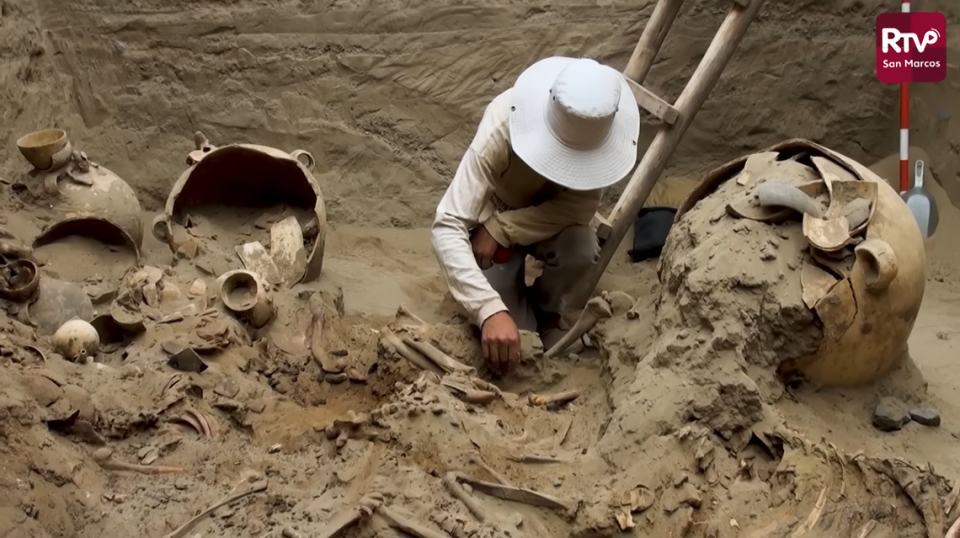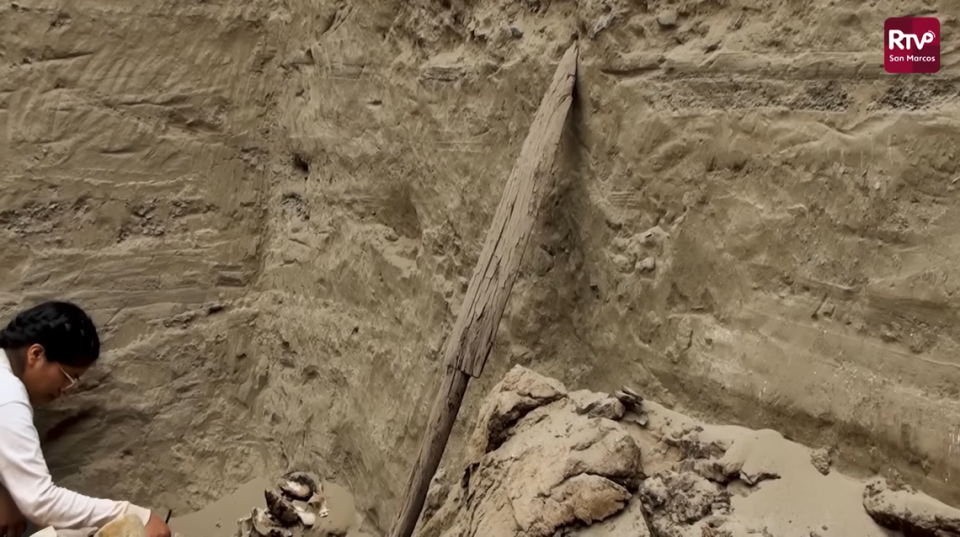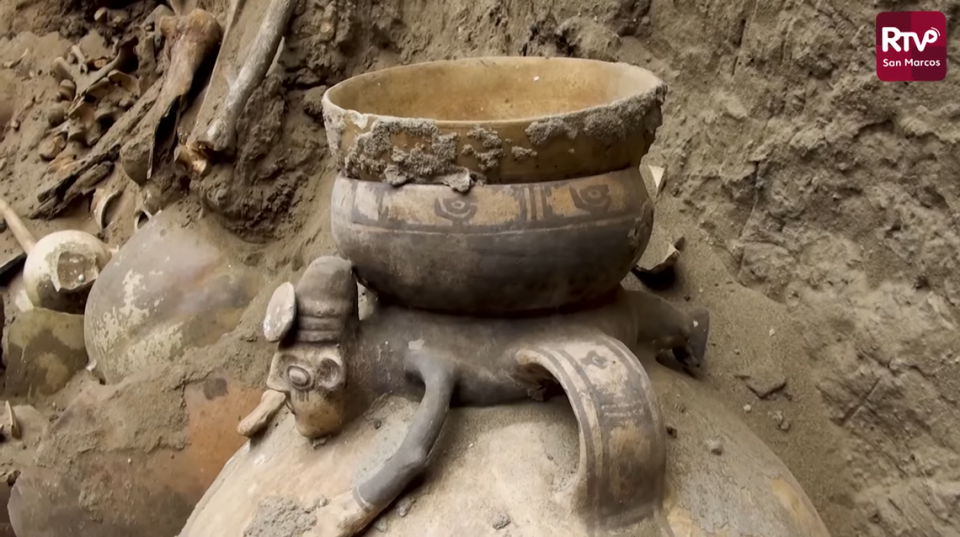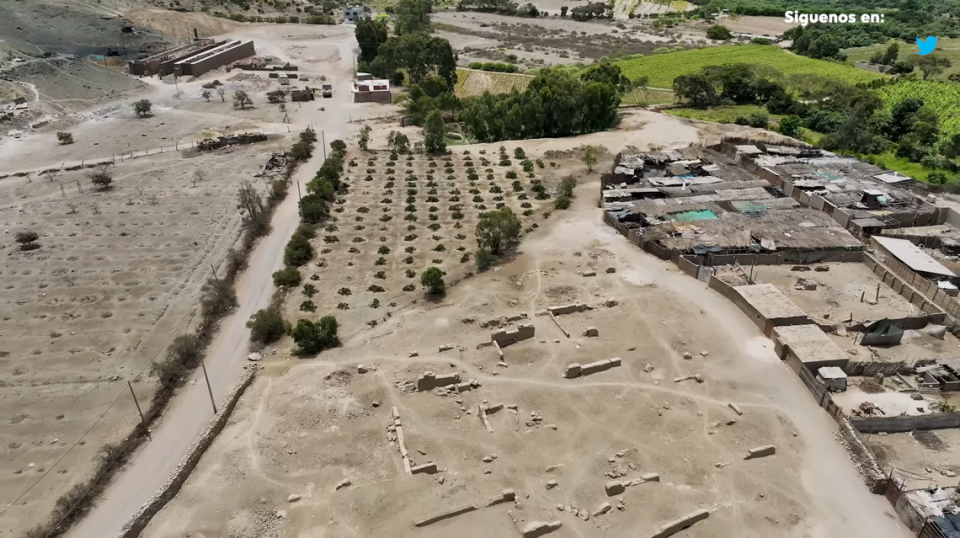Sea lord’s 1,000-year-old tomb uncovered — with first-of-its-kind artifact — in Peru
Hidden under the tan-brown dirt of Peru, a sea lord’s skeleton rested among the luxuries of the afterlife. Surrounded by sacrifices and offerings, the elite figure was forgotten — until now.
Archaeologists excavating the Macatón cemetery in Huaral uncovered the large tomb, the National Major University of San Marcos said in a May 15 news release.
The 1,000-year-old tomb was about 23 feet deep and about 23 feet wide, the release said. Inside, archaeologists found an elite figure, as well as five other people, four llamas and several pottery vessels.
The burial was left by the Chancay culture, a pre-Incan culture that developed between 1000 and 1500 A.D., the release said.
The tomb’s central elite figure was identified as a sea lord, the excavation’s lead archaeologist Pieter Van Dalen Luna told EFE. The presence of a wooden oar — the first artifact of its kind found at the Macatón cemetery — led to this identification, the outlet reported.
The sea lord was likely dedicated to fishing, shellfish hunting or another marine activity, Van Dalen told BBC.

Video footage shared on YouTube by the National Major University of San Marcos shows the elaborate tomb. Photos show the heap of skeletons and broken pottery at the bottom of the pit.
Another photo shows the top of the wooden oar as it rests against the side of the tomb.

The other skeletons found in the tomb were likely relatives and servants who were sacrificed, BBC reported.

The burial also contained 25 pottery vessels with offerings of food for the deceased’s afterlife, EFE reported.
The Chancay culture believed deceased individuals did not cease to exist but became protective ancestors through a series of transformative stages on their path to the dead, experts said in the release.
The Chancay culture faded around 1500 A.D. at a time coinciding with the Incan empire’s territorial expansion, EFE reported.

The excavation site is about 165 feet from a neighborhood of homes, BBC reported. These houses are likely preventing archaeologists from uncovering other tombs, but the houses also deterred looters from disturbing the area, archaeologists told the outlet.
The sea lord’s tomb is the oldest and largest tomb of about 80 burials found in the Macatón cemetery so far, BBC reported.
Archaeologists will continue analyzing the remains of the deceased to further understand the burial, the release said.
Haural is about 45 miles northwest of Lima.
Google Translate was used to translate the news release and YouTube video descriptions from the National Major University of San Marcos and articles from EFE and BBC.
500-year-old shipwrecks teeming with porcelain and wood discovered in South China Sea
‘Rather mysterious’ 1,050-year-old structure unearthed in Germany. What is it?
Nearly 2,000-year-old Roman villa — with private pool — unearthed from French cemetery

